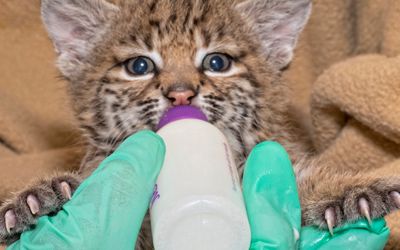Professional Insights on Burlington Animal Control for Pet Owners
Wiki Article
Common Challenges and Solutions in Urban Wildlife Removal Efforts
Urban settings existing one-of-a-kind difficulties for wildlife monitoring experts tasked with managing or removing wild animals populations. Recognizing the intricacies involved in city wildlife elimination is critical for creating strategies that stabilize human security with wildlife well-being. This discourse looks for to uncover the elaborate equilibrium required for effective urban wild animals management.Honest Wildlife Management
Addressing the complexities of moral wildlife monitoring requires a balance in between human interests and the conservation of wildlife communities. In city settings, this balance comes to be progressively tough as human expansion encroaches on wildlife environments, leading to frequent human-animal interactions. Honest wild animals management in these atmospheres needs strategies that prioritize gentle treatment of animals while reducing prospective problems.One of the core concepts in ethical wild animals administration is the avoidance of harm. This includes employing non-lethal techniques for wild animals removal, such as exemption techniques that stop pets from getting in human dwellings, or using deterrents that assist them far from city locations. Wild animals professionals are tasked with employing techniques that lessen stress and anxiety and injury to the pets, guaranteeing their well-being is considered together with human safety and security.
Furthermore, honest administration needs notified decision-making based on scientific research and environmental understanding. It is necessary to analyze the eco-friendly duties of city wild animals and exactly how their removal might affect regional biodiversity. Professionals should also participate in public education and learning, cultivating a more comprehensive understanding of conjunction methods and highlighting the significance of preserving all-natural environments. Eventually, effective ethical wild animals monitoring entails partnership between conservationists, policymakers, and the public to maintain metropolitan communities.
Browsing Legal Restrictions
Browsing the legal landscape of city wildlife elimination presents an intricate layer to the already tough task of moral wildlife monitoring. Legal constraints are important in ensuring that wild animals is treated humanely and environments are preserved. These legislations differ substantially across regions, demanding extensive understanding and conformity from those involved in wild animals management. Rules typically specify permissible methods of elimination, safeguarded varieties, and licensure needs, thereby forming the approaches employed by experts.One major difficulty is the consistent advancement of these regulations, often driven by environmental changes and societal attitudes in the direction of wildlife conservation. Therefore, experts need to continue to be enlightened concerning present lawful criteria and forthcoming legal adjustments. Non-compliance can lead to considerable fines, lawful ramifications, and reputational damage.
Moreover, partnership with neighborhood authorities can be essential in browsing these constraints properly. Building relationships with wildlife companies and legal experts can offer beneficial understandings and assistance. This collaboration makes certain that removal initiatives are not just legal however likewise align with more comprehensive conservation objectives. Thus, understanding and adhering to legal frameworks is not merely a procedural need but a fundamental element of accountable and lasting metropolitan wild animals monitoring.

Safety And Security in Elimination Practices
Guaranteeing safety and security in wild animals removal techniques is critical to shielding both animal and human well-being. These efforts need a well balanced method that lessens danger while attaining the preferred result of relocating pets from metropolitan settings. A primary issue in wildlife removal is the potential for injury or disease transmission to humans, requiring the usage of individual protective devices (PPE) such as handwear covers, masks, and goggles. Educated professionals ought Check This Out to deal with removals to avoid intensifying the circumstance, as untrained individuals might accidentally harm themselves or the animals involved.
Safe removal techniques also consist of using gentle traps created to stop injury. These catches have to be consistently kept an eye on to ensure that pets are not left in distress. Additionally, it is vital to comply with guidelines that determine the appropriate handling, transportation, and launch of recorded wildlife, ensuring that the pets are gone back to appropriate habitats where they can prosper without positioning further risks to urban environments.
Furthermore, education and training for those involved in wildlife removal are important. This ensures that all events recognize the latest safety protocols and methods, thereby minimizing the chance of mishaps and promoting an unified conjunction in between city dwellers and wildlife.
Ingenious Deterrent Solutions
While safety and security in wild animals elimination is vital, avoiding encounters with metropolitan wildlife with ingenious deterrent remedies can substantially lower the need for such interventions. Urban environments, with their abundance of food and sanctuary, frequently attract wildlife like pigeons, raccoons, and squirrels, bring about possible problems. Developments in modern technology and layout have actually led the way for imaginative and efficient deterrent approaches that minimize wildlife visibility without injury.One such option is using ultrasonic gadgets, which release high-frequency noises faint to human beings yet unpleasant for various wild animals varieties, driving them away from particular locations. In addition, motion-activated sprinklers can deter animals by stunning them with unexpected bursts of water, effectively inhibiting their return. These gadgets are particularly useful in shielding gardens and green areas from foraging animals.

In addition, the assimilation of smart lights systems that adjust their brightness and shade can disrupt the nocturnal tasks of certain wild animals, lowering their comfort in city setups. Physical barriers, such as bird spikes and nettings, remain to function as practical deterrents, stopping pets from nesting or roosting in undesirable places. Stressing humane and environmentally friendly methods, these innovations hold guarantee for sustainable city wild animals management.
Community Education Efforts
Recognizing the importance of have a peek at this site neighborhood education and learning efforts is critical in addressing urban wildlife difficulties successfully. Such efforts play a substantial duty in cultivating conjunction in between human beings and wild animals in city setups by elevating recognition and advertising accountable habits. Informing citizens regarding regional wildlife types, their habitats, and behaviors can reduce misunderstandings and fear, leading to more enlightened choices pertaining to wild animals administration.Neighborhood education initiatives commonly include workshops, seminars, and outreach programs made to engage locals of any ages. These campaigns can concentrate on useful advice, such as securing waste bins, installing bird-friendly structures, and preventing feeding like it wildlife, which assists avoid drawing in animals right into urban locations. By disseminating knowledge concerning the environmental roles of wild animals, neighborhoods can shift perspectives from watching pets as problems to recognizing their worth within metropolitan communities.
Homeowners who comprehend the relevance of wildlife preservation are a lot more most likely to support humane removal methods and environment defense measures - burlington animal control. Effective neighborhood education and learning calls for collaboration between regional authorities, wild animals specialists, and area leaders to create customized programs that address certain city wild animals concerns.
Verdict
Urban wild animals removal calls for a diverse approach, resolving honest management, lawful compliance, and safety and security in removal methods. Effective urban wild animals management hinges on cooperation among specialists, authorities, and citizens, making certain methods that safeguard human security while valuing wildlife well-being.Urban environments existing one-of-a-kind challenges for wild animals management experts entrusted with taking care of or removing wildlife populaces. Recognizing the intricacies involved in urban wildlife removal is crucial for developing methods that stabilize human safety with wildlife welfare.Navigating the lawful landscape of city wild animals removal presents a complicated layer to the currently tough job of ethical wildlife administration.While security in wild animals elimination is crucial, preventing encounters with urban wildlife with ingenious deterrent options can dramatically reduce the need for such interventions. Successful urban wildlife management hinges on collaboration among authorities, locals, and experts, ensuring methods that guard human safety and security while valuing wild animals welfare.
Report this wiki page